Contents
Getting started
Information flow in Amber
Installation
Combining AmberTools13 with Amber11 or Amber10
Testing the installation
Applying Updates
Contacting the developers
List of programs
Specifying a force field
Specifying which force field you want in LEaP
The ff12SB force field
The AMOEBA potentials
The Duan et al. (2003) force field
The Yang et al. (2003) united-atom force field
Force fields related to semi-empirical QM
The GLYCAM force fields for carbohydrates and lipids
Lipid Force Fields
Ions
Solvent models
CHAMBER
Obsolete force field files
Reading and modifying Amber parameter files
Understanding Amber parameter files
ParmEd
paramfit
LEaP
Introduction
Concepts
Running LEaP
Basic instructions for using LEaP to build molecules
Commands
Building oligosaccharides and lipids
Antechamber and MCPB
Principal programs
A simple example for antechamber
Programs called by antechamber
Miscellaneous programs
New Development of Antechamber And GAFF
Metal Center Parameter Builder (MCPB)
amberlite: Some AmberTools-Based Utilities
Introduction
Coordinates and Parameter-Topology Files
pytleap: Creating Coordinates and Parameter- Topology Files
Energy Checking Tool: ffgbsa
Energy Minimizer: minab
Molecular Dynamics "Lite": mdnab
MM(GB)(PB)/SA Analysis Tool: pymdpbsa
Appendix A: Preparing PDB Files
Appendix B: Atom and Residue Selections
Appendix C: Examples and Test Cases
sqm: Semi-empirical quantum chemistry
Available Hamiltonians
Charge-dependent exchange-dispersion corrections of vdW interactions
Dispersion and hydrogen bond correction
Usage
cpptraj
Running cpptraj
General Concepts
Data Sets and Data Files
Coordinates as a Data Set (COORDS Data Sets)
General Commands
Parameter File Commands
Trajectory File Commands
Data File Commands
Actions that Modify Topology/Coordinates
Action Commands
Matrix and Vector Actions
Data Set Analysis Commands
Coordinate Analysis Commands
Matrix and Vector Analysis
Matrix/Vector Analysis Examples
ptraj
ptraj coordinate input/output commands
ptraj commands that override the molecular information specified
ptraj action commands
Correlation and fluctuation facility
Hydrogen bonding facility
rdparm
PBSA
Introduction
Usage and keywords
Example inputs and demonstrations of functionalities
Visualization functions in pbsa
pbsa in sander and NAB
Reference Interaction Site Model
Introduction
Practical Considerations
Work Flow
rism1d
3D-RISM in NAB
rism3d.snglpnt
MMPBSA.py
Introduction
Preparing for an MM/PB(GB)SA calculation
Running MMPBSA.py
Python API
mdgx: A Developmental Molecular Simulation Engine
Input and Output
Installation
Special Algorithmic Features of mdgx
Customizable Virtual Site Support in mdgx
Restrained Electrostatic Potential Fitting in mdgx
Bonded Term Fitting in mdgx
Thermodynamic Integration
Future Directions and Goals of the mdgx Project
Miscellaneous utilities
ambpdb
reduce
elsize
Utilities for Molecular Crystal Simulations
MdoutAnalyzer.py
NAB: Introduction
Background
Methods for structure creation
Compiling nab Programs
Parallel Execution
First Examples
Molecules, Residues and Atoms
Creating Molecules
Residues and Residue Libraries
Atom Names and Atom Expressions
Looping over atoms in molecules
Points, Transformations and Frames
Creating Watson Crick duplexes
Structure Quality and Energetics
NAB: Language Reference
Introduction
Language Elements
Higher-level constructs
Statements
Structures
Functions
Points and Vectors
String Functions
Math Functions
System Functions
I/O Functions
Molecule Creation Functions
Creating Biopoloymers
Fiber Diffraction Duplexes in NAB
Reduced Representation DNA Modeling Functions
Molecule I/O Functions
Other Molecular Functions
Debugging Functions
Time and date routines
Computational resource consumption functions
NAB: Rigid-Body Transformations
Transformation Matrix Functions
Frame Functions
Functions for working with Atomic Coordinates
Symmetry Functions
Symmetry server programs
NAB: Distance Geometry
Metric Matrix Distance Geometry
Creating and manipulating bounds, embedding structures
Distance geometry templates
Bounds databases
NAB: Molecular mechanics and dynamics
Basic molecular mechanics routines
NetCDF read/write routines
Typical calling sequences
Second derivatives and normal modes
Low-MODe (LMOD) optimization methods
Using the Hierarchical Charge Partitioning (HCP) method
NAB: Sample programs
Duplex Creation Functions
nab and Distance Geometry
Building Larger Structures
Wrapping DNA Around a Path
Other examples
Bibliography
Bibliography
Index
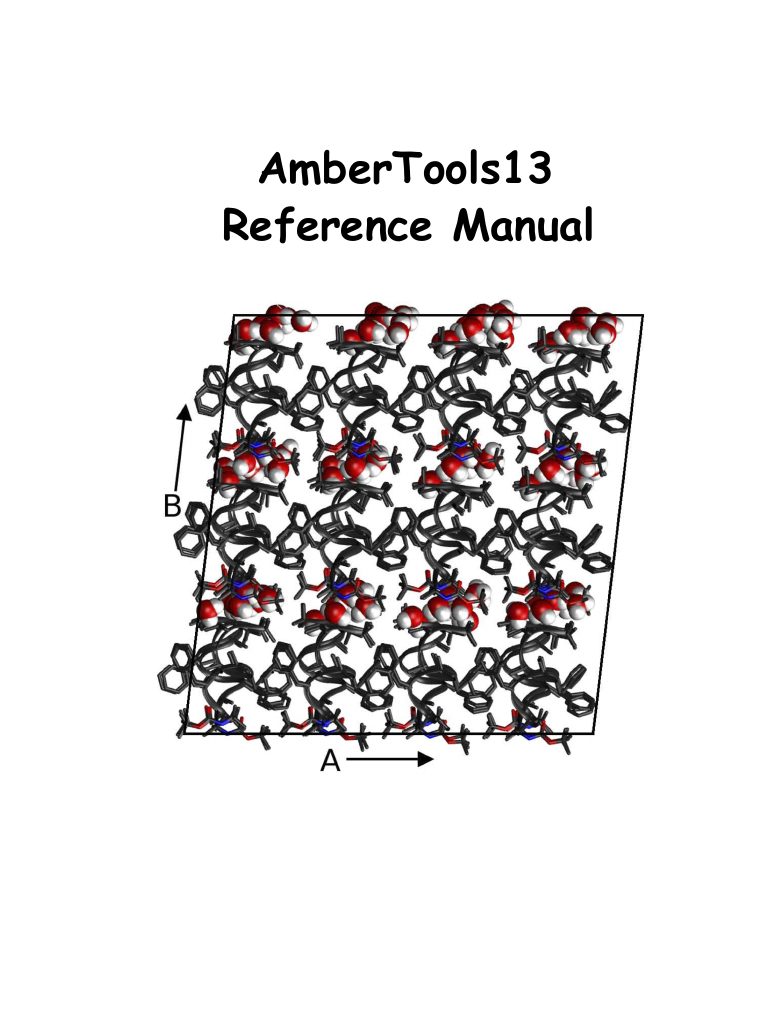

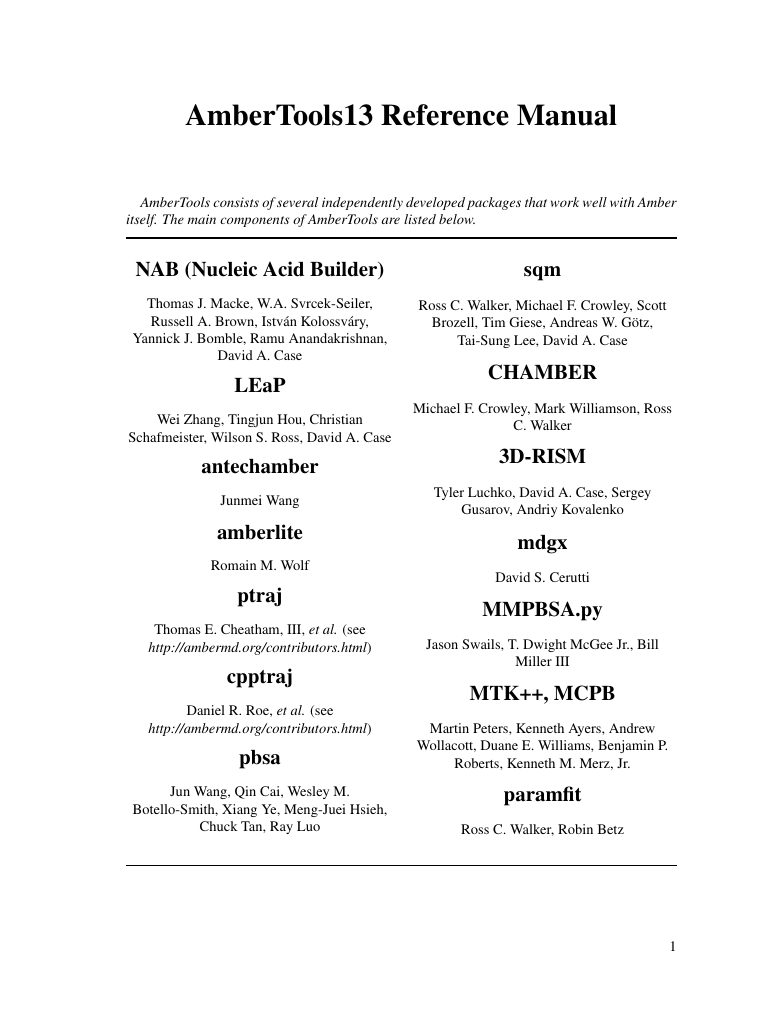
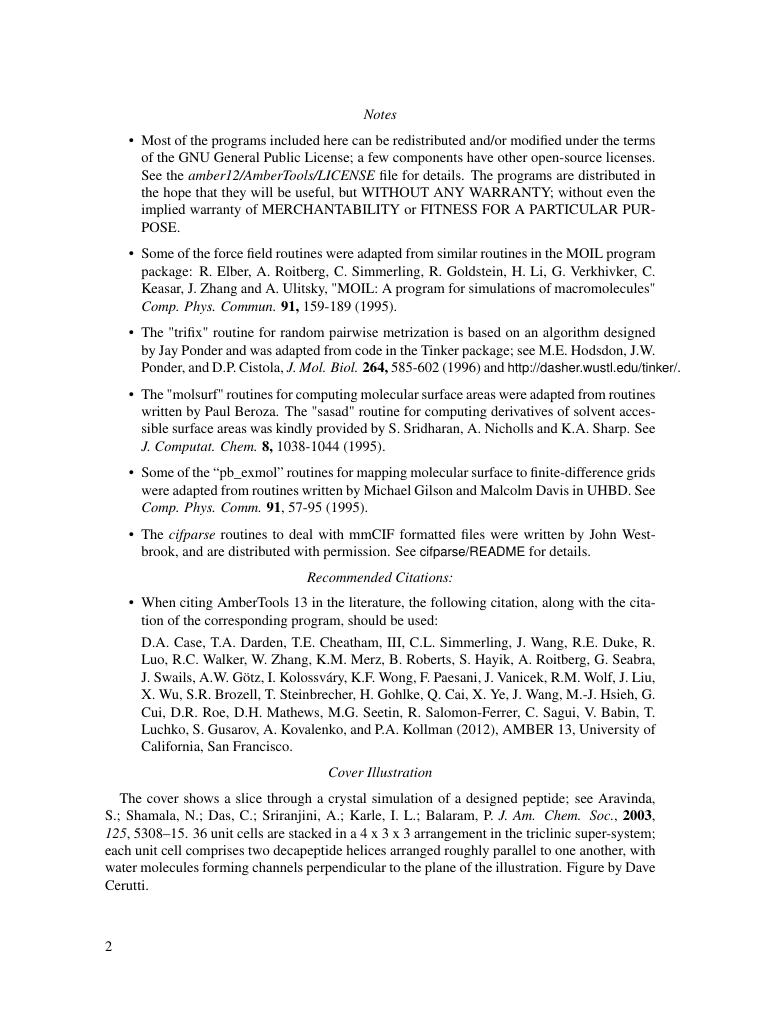

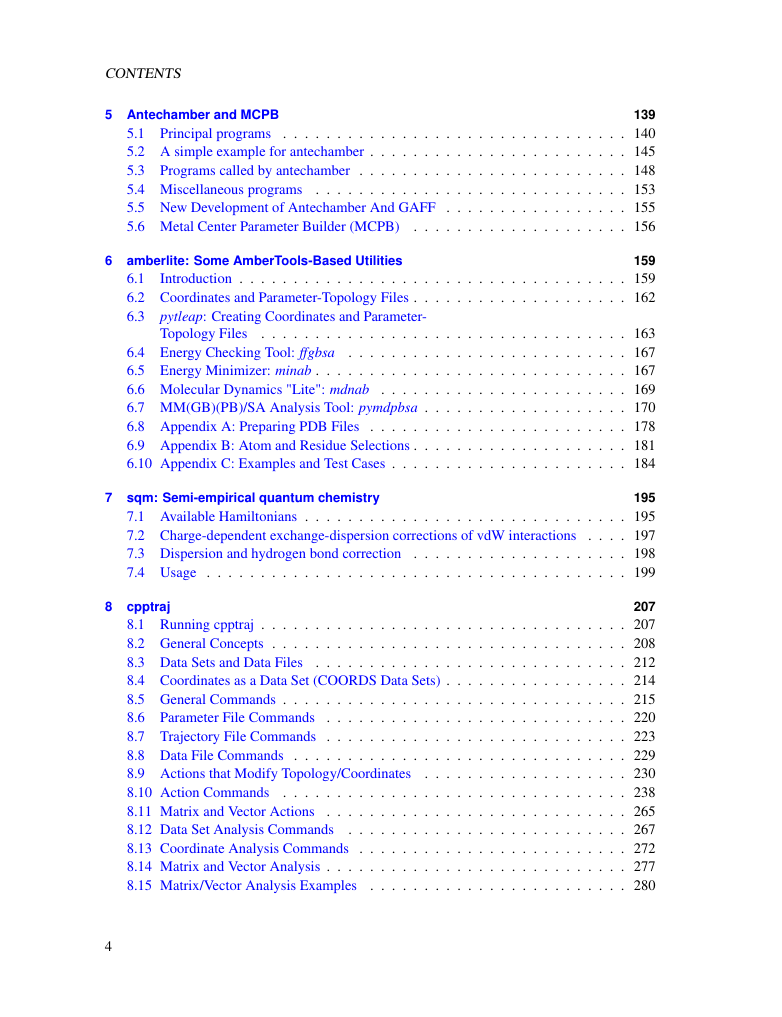
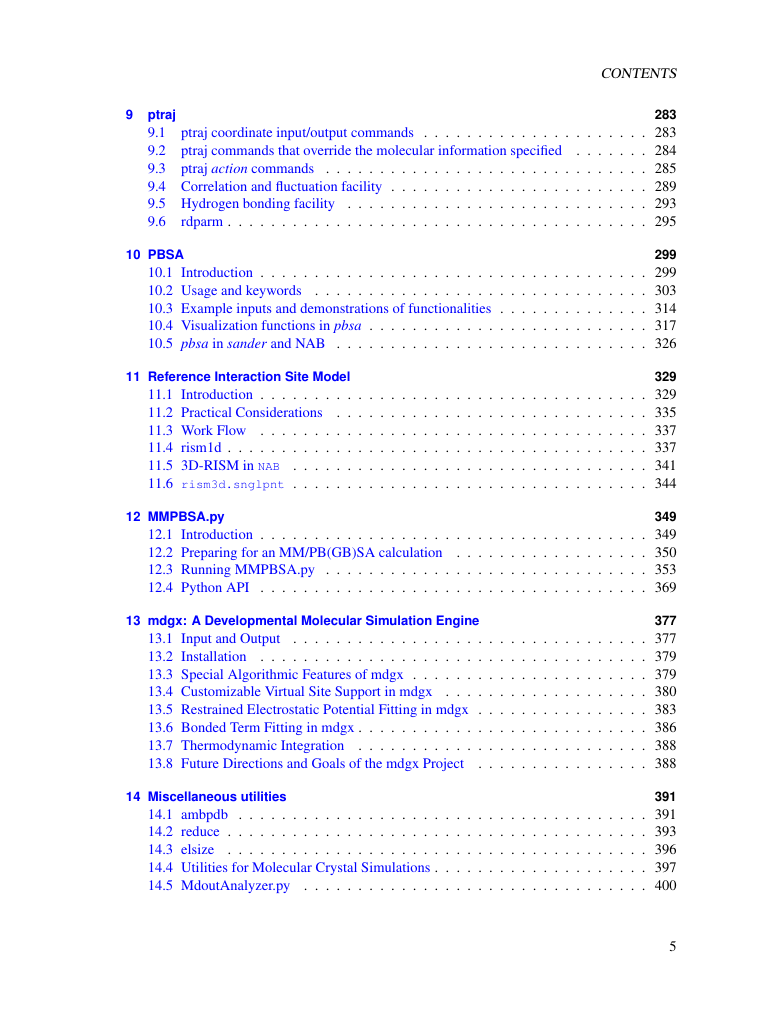
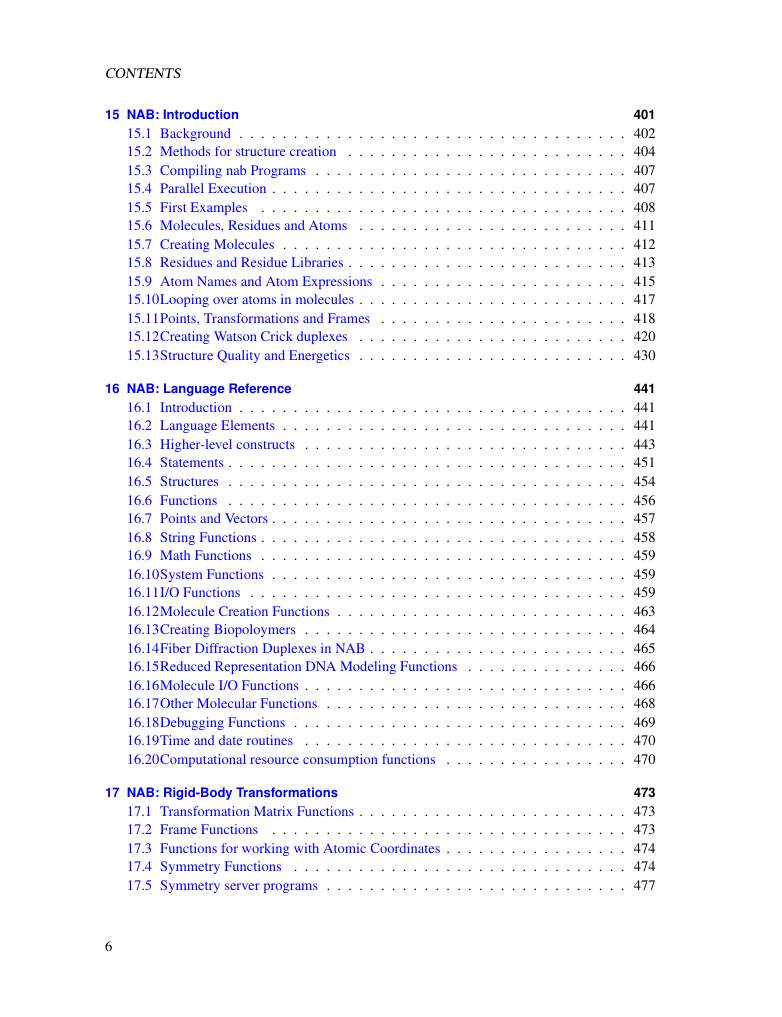








 2023年江西萍乡中考道德与法治真题及答案.doc
2023年江西萍乡中考道德与法治真题及答案.doc 2012年重庆南川中考生物真题及答案.doc
2012年重庆南川中考生物真题及答案.doc 2013年江西师范大学地理学综合及文艺理论基础考研真题.doc
2013年江西师范大学地理学综合及文艺理论基础考研真题.doc 2020年四川甘孜小升初语文真题及答案I卷.doc
2020年四川甘孜小升初语文真题及答案I卷.doc 2020年注册岩土工程师专业基础考试真题及答案.doc
2020年注册岩土工程师专业基础考试真题及答案.doc 2023-2024学年福建省厦门市九年级上学期数学月考试题及答案.doc
2023-2024学年福建省厦门市九年级上学期数学月考试题及答案.doc 2021-2022学年辽宁省沈阳市大东区九年级上学期语文期末试题及答案.doc
2021-2022学年辽宁省沈阳市大东区九年级上学期语文期末试题及答案.doc 2022-2023学年北京东城区初三第一学期物理期末试卷及答案.doc
2022-2023学年北京东城区初三第一学期物理期末试卷及答案.doc 2018上半年江西教师资格初中地理学科知识与教学能力真题及答案.doc
2018上半年江西教师资格初中地理学科知识与教学能力真题及答案.doc 2012年河北国家公务员申论考试真题及答案-省级.doc
2012年河北国家公务员申论考试真题及答案-省级.doc 2020-2021学年江苏省扬州市江都区邵樊片九年级上学期数学第一次质量检测试题及答案.doc
2020-2021学年江苏省扬州市江都区邵樊片九年级上学期数学第一次质量检测试题及答案.doc 2022下半年黑龙江教师资格证中学综合素质真题及答案.doc
2022下半年黑龙江教师资格证中学综合素质真题及答案.doc